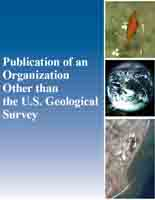Understanding the evolution of scoria cone morphology using multivariate models
Links
- More information: Publisher Index Page (via DOI)
- Open Access Version: Publisher Index Page
- Download citation as: RIS | Dublin Core
Abstract
Scoria cones are the most abundant type of volcano in the Solar System. They occur in every tectonic setting and often overlap with human populations, yet our ability to provide complete geochronology within volcanic fields remains limited. Appropriate geochronology underpins the reconstruction of size-frequency distribution and is a key input for robust volcanic hazard assessment. Morphometric data have long been used to estimate relative ages of scoria cones; however, they have only shown promise at single volcanic fields and simple cones with homogenous pyroclastics. Here, we present a new global inventory of dated scoria cones (n = 572) from 71 volcanic fields formed under diverse magmatic, tectonic and climatic regimes, and build data-driven age models for dating scoria cones using easily accessible morphometric, reflectance and climatic variables. Our models suggest chemical composition of ascending magma may influence the initial scoria cone morphology which is then gradually modified by erosion over time.
| Publication type | Article |
|---|---|
| Publication Subtype | Journal Article |
| Title | Understanding the evolution of scoria cone morphology using multivariate models |
| Series title | Communications Earth & Environment |
| DOI | 10.1038/s43247-025-02425-8 |
| Volume | 6 |
| Publication Date | June 06, 2025 |
| Year Published | 2025 |
| Language | English |
| Publisher | Nature |
| Contributing office(s) | Volcano Science Center |
| Description | 439, 11 p. |


